Silent Era Home Page > Home Video > Max Fleischer’s Famous Out of the Inkwell

Reviews of silent film releases on home video.
Copyright © 1999-2025 by Carl Bennett
and the Silent Era Company.
All Rights Reserved. |
|
Max Fleischer’s
Famous
Out of the Inkwell
(1919-1927)
|
Max Fleischer was an innovator to early cinema fans. He is a god to early animation buffs. Many film enthusiasts are familiar with Fleischer’s Betty Boop, Popeye and Superman cartoons of the Golden Age, but few of the general population are aware of his pioneering animation work in the silent era.
Fleischer developed and held patents on several animation and film production processes, including rotoscoping, a process whereby a live subject is photographed and used as the model for lifelike animated drawings.
Fleischer’s brother Dave, a part-time professional clown, became the world’s first rotoscope model when Max created a clown cartoon character, that would come to be known as Ko-Ko, during his early years working for J.R. Bray’s cartoon studios.
From the beginning, the pattern of Ko-Ko cartoons was established: Max (in live-action footage) would draw Ko-Ko (in stop-motion animation), who would come to life and cause no end of trouble (in full-animation). Ko-Ko usually ended up dribbling back into the ink bottle from whence he came — by force or of his own will — to end each cartoon.
Before long (with the coaxing of brother Dave), Max established the Out of the Inkwell animation studio and continued his successful run of Ko-Ko cartoons, delighting Inkwell fans with the little clown’s mischievous exploits.
During the 1920s, Max Fleischer created the famous bouncing ball sing-along films (that occasionally graced locally-produced television cartoon shows well into the 1960s), and he also became the first cartoon producer to synchronize recorded sound with animated films (employing the DeForest Phonofilm sound system), years before it was done by rival animator Walt Disney.
— Carl Bennett
|
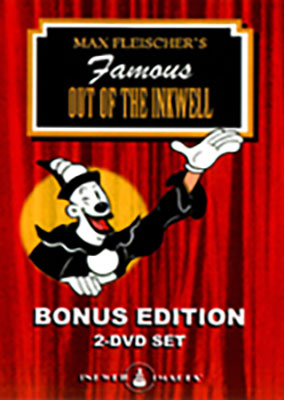 Inkwell Images Inkwell Images
2004 DVD edition
Max Fleischer’s Famous Out of the Inkwell, Volumes 1-4 (1919-1927), black & white and color-toned black & white, 210 minutes total, not rated, including The Tantalizing Fly (1919), black & white, ? minutes, not rated, The Chinaman (1920), black & white, ? minutes, not rated, The Ouija Board (1920), black & white, ? minutes, not rated, The Clown’s Little Brother (1920), black & white, ? minutes, not rated, Perpetual Motion (1920), black & white, ? minutes, not rated, The Automobile Ride (1921), black & white, ? minutes, not rated, Modeling (1921), black & white, ? minutes, not rated, Fishing (1921), black & white, ? minutes, not rated, Invisible Ink (1921), black & white, ? minutes, not rated, Bubbles (1922), black & white, ? minutes, not rated, Flies (1922), black & white, ? minutes, not rated, Jumping Beans (1922), black & white, ? minutes, not rated, Bed Time (1923), black & white, ? minutes, not rated, False Alarm (1923), black & white, ? minutes, not rated, Puzzle (1923), black & white, ? minutes, not rated, Cartoon Factory (1924), black & white, ? minutes, not rated, Koko in 1999 (1924), black & white, ? minutes, not rated, Trip to Mars (1924), black & white, ? minutes, not rated, Vaudeville (1924), black & white, ? minutes, not rated, Big Chief Ko-Ko (1925), black & white, ? minutes, not rated, Ko-Ko Nuts (1925), black & white, ? minutes, not rated, Ko-Ko the Barber (1925), black & white, ? minutes, not rated, Ko-Ko Trains ’em (1925), black & white, ? minutes, not rated, Mother Goose Land (1925), black & white, ? minutes, not rated, It’s the Cats (1926), black & white, ? minutes, not rated, Ko-Ko Baffles the Bulls (1926), black & white, ? minutes, not rated, Ko-Ko the Convict (1926), black & white, ? minutes, not rated, Ko-Ko Back Tracks (1927), black & white, ? minutes, not rated, and Ko-Ko Needles the Boss (1927).
Inkwell Images, unknown catalog number, unknown UPC number.
Two single-sided?, single-layered?, Region 0 NTSC DVD disc; 1.33:1 aspect ratio picture in full-frame 4:3 (720 x 480 pixels) interlaced scan image encoded in SDR MPEG-2 format at 5.5 Mbps average video bit rate (capable of progressive scan upscaling to ? fps); Dolby Digital (AC3) 2.0 mono sound encoded at ? Kbps audio bit rate; English language intertitles, no subtitles; chapter stops; standard DVD keepcase; $39.95 (reduced to $34.95).
Release date: 1 October 2004.
Country of origin: USA
|
|
This two-disc DVD collection has replaced this previous single-disc edition reviewed below.
Read our review of the first volume for an indication of edition quality.
|
|
This
Region 0 NTSC DVD edition is available directly from . . .
|

|
|
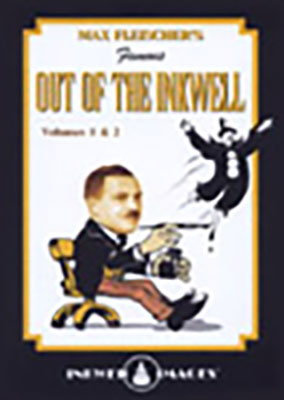 Inkwell Images Inkwell Images
2003 DVD edition
Max Fleischer’s Famous Out of the Inkwell, Volumes 1 & 2 (1919-1923), black & white and color-toned black & white, 90 minutes total, not rated, including The Tantalizing Fly (1919), black & white, ? minutes, not rated, The Chinaman (1920), black & white, ? minutes, not rated, The Ouija Board (1920), black & white, ? minutes, not rated, The Clown’s Little Brother (1920), black & white, ? minutes, not rated, Perpetual Motion (1920), black & white, ? minutes, not rated, The Automobile Ride (1921), black & white, ? minutes, not rated, Modeling (1921), black & white, ? minutes, not rated, Fishing (1921), black & white, ? minutes, not rated, Invisible Ink (1921), black & white, ? minutes, not rated, Bubbles (1922), black & white, ? minutes, not rated, Flies (1922), black & white, ? minutes, not rated, Jumping Beans (1922), black & white, ? minutes, not rated, Bed Time (1923), black & white, ? minutes, not rated, and Puzzle (1923), black & white, ? minutes, not rated.
Inkwell Images, unknown catalog number, UPC 8-06777-00015-7.
One single-sided, single-layered, Region 0 NTSC DVD disc; 1.33:1 aspect ratio picture in full-frame 4:3 (720 x 480 pixels) interlaced scan image encoded in SDR MPEG-2 format at 5.5 Mbps average video bit rate (capable of progressive scan upscaling to ? fps); Dolby Digital (AC3) 2.0 mono sound encoded at ? Kbps audio bit rate; English language intertitles, no subtitles; 18 chapter stops; standard DVD keepcase; $21.95.
Release date: 3 March 2003.
Country of origin: USA
Ratings (1-10): video: 6 / audio: 5 / additional content: 0 / overall: 6.
|
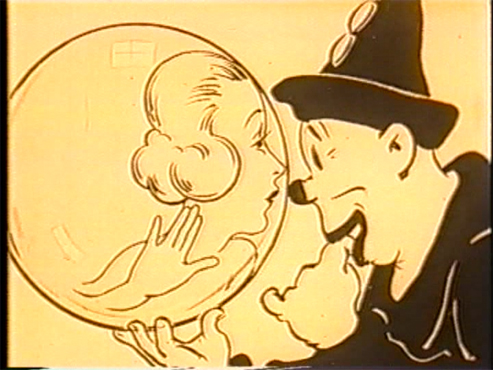
This DVD collection of 14 early animation films by Max Fleischer includes the complete content of two volumes previously issued by Inkwell Images on VHS videotape. Volume one focuses on Fleischer’s work for John Randolph Bray’s studio, and volume two features films from the Fleischer Inkwell Studio years. Each begins with a short documentary introduction produced by Ray Pointer.
The Tantalizing Fly (1919) features a pesky fly that irritates both Max and Ko-Ko the clown. The film has been transferred from a slightly contrasty 16mm print that is of good quality, with minor scratches and plugged shadows.
The Chinaman (1920) features a man who is looking for work as an animator at the Bray Studios. While he draws a portrait of Max, Ko-Ko gets rough with the man’s drawing of a chinaman, then with the would-be artist. Transferred from a good to very-good and slightly contrasty 16mm duplicate print, with minor flaws.
The Ouija Board (1920) finds Ko-Ko disturbed by ghosts while Max deals with Ouija-board-reading employees. Ko-Ko then haunts the studio. This is one of the few times that Ko-Ko doesn’t end up back in the inkwell. The 16mm reduction print was apparently mastered from two separate prints: one a very-good-to-excellent print with some emulsion scrapes damage, and another that was a slightly constrasty print. The film is presented in black & white and electronically-added peach color-tones.
The Clown’s Little Brother (1920) brings news of Ko-Ko’s little brother arriving by parcel post. On arrival, the brother becomes a pest for Ko-Ko and Max. The film has been transferred from a good-to-very-good 16mm reduction print, with soft detail, that is slightly contrasty and lightly speckled.
Perpetual Motion (1920) features a perpetual motion machine that Max arranges to buy from its inventor, only to find that he has been boondoggled by Ko-Ko. Transferred from a very-good 16mm reduction print, with light speckling and dust.
The Automobile Ride (1921) features Max leaving the office for a ride with a date. Unfortunately, Ko-Ko does what he can to upset the plan. Transferred from a good 16mm reduction print, with moderate exposure fluctuations, contrasty picture, dust and speckling.
Modeling (1921) is the first of the cartoons in this collection produced for Fleischer’s own company and features Max with a fussy clay sculpture model. Ko-Ko adds his own brand of mischief. Transferred from a slightly-contrasty 35mm print, with moderate dust, speckling, and vertical scratches.
Fishing (1921) shows Max getting away from the office for a day of fishing, and Ko-Ko does his own at the studio, with trouble provided by a number of water creatures. Ko-Ko strikes back for his troubles by spoiling Max’s day out. Transferred from a very-good color-toned 16mm reduction print that is moderately dusty, speckled, scratched, and has a persistent case of frame jitters.
Invisible Ink (1921) features a pesky Ko-Ko punished for his mischief by Max, who has drawn a series of cartoon props in disappearing ink. Ko-Ko then leads Max on a chase through the neighborhood. One of the funniest cartoons on the disc. Transferred from a good to very-good 16mm reduction print that speckled, scratched, slightly jittery, and a higher than usual amount of dust.
Bubbles (1922) begins with Max and Ko-Ko blowing bubbles. Whaddaya know? It soons escalates into a bubble battle and a chase. Transferred from a very-good 16mm reduction print, with the usual flaws and a mild case of the jitters.
Jumping Beans (1922) gives Max an opportunity to annoy Ko-Ko, until (shades of the future Fleischer Gulliver’s Travels!) Ko-Ko multiplies himself and goes after the boss. Transferred from what appears to be a very-good 16mm reduction print (part black & white, and part electronically color-tinted and toned), with a light amount of dust and speckling.
Bed Time (1923) features more of the multitoned backgrounds that first appeared in this collection in Jumping Beans, with Max trying to isolate Ko-Ko so that he can sleep through the evening. Transferred from a very-good 16mm reduction print (part electronically color-tinted and toned, and part black & white), with light dust and speckling.
Flies (1923) features a number of flies that annoy Max and Ko-Ko. Transferred from a very contrasty 16mm (or 8mm?) reduction print. Still easy to follow the action.
Puzzle (1923) has Max trying to figure out a jigsaw puzzle with Ko-Ko’s help. Another of the best films in the collection. Transferred from a very-good to excellent 16mm reduction print (part black & white, and part electronically color-tinted and toned), with very light speckling and dust.
This collection does a very good job of covering Ko-Ko’s early evolution as a character over a mere four years. We like the latter cartoons, as the pressures of the production schedule forced more creative storylines and animated wackiness out of the Fleischer crew.
All of the video transfers feature a greyscale range that is a bit on the flat side to avoid burning out the highlights from the slightly-contrasty prints. Many of the Fleischer Ko-Ko cartoons featured little or nothing in the way of animation backgrounds other than white paper. We have seen transfers of early cartoons elsewhere that are too contrasty, producing harsh whites that distract from the enjoyment of the animated films. Great care has apparently been taken to keep the contrasty prints from getting worse.
Most of the films feature new main title and intertitle cards produced by Inkwell Images. While we would prefer to see the original main titles and intertitles, many of the surviving prints were prepared for television broadcast in the 1950s and had their intertitles removed or were prints prepared for the home collector market in the 1930s. Edition producer Ray Pointer has written an online article on his acquisition and restoration of the Max Fleischer films. Pointer has done everything possible in these video editions to restore the films to their former state, including restoring intertitles, restoring the films to their original internal sequencing, removing or repairing damaged frames, etc.
The video compression of the disc is perhaps a little higher than it should be, with compression artifacts visible in every still frame. But the slightly rough image quality is a passible for the quality of the source prints, and few viewers will be distracted by the artifacts when the image is in motion.
All of the films feature musical accompaniment (some of it by veteran cartoon composer Winston Sharples) and sound effects that were post-synched to the films. The older music recordings does well at both accompanying the films and evoking the general era of the original films.
Overall, we commend Ray Pointer on his restoration efforts, and recommend this disc to animation and silent film enthusiasts.
This edition was replaced in 2004 by the expanded bonus edition reviewed above.
|
This Region 0 NTSC DVD edition has been discontinued
and is . . .
|

|
|
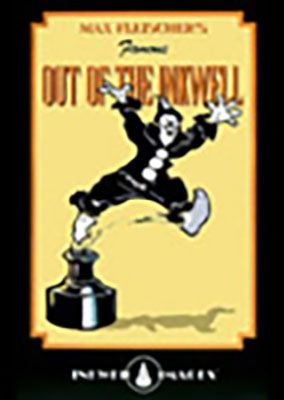 Inkwell Images Inkwell Images
2003 DVD edition
Max Fleischer’s Famous Out of the Inkwell, Volumes 3 & 4 (1923-1927), black & white and color-toned black & white, 120 minutes total, not rated, including False Alarm (1923), black & white, ? minutes, not rated, Cartoon Factory (1924), black & white, ? minutes, not rated, Koko in 1999 (1924), black & white, ? minutes, not rated, Trip to Mars (1924), black & white, ? minutes, not rated, Vaudeville (1924), black & white, ? minutes, not rated, Big Chief Ko-Ko (1925), black & white, ? minutes, not rated, Ko-Ko Nuts (1925), black & white, ? minutes, not rated, Ko-Ko the Barber (1925), black & white, ? minutes, not rated, Ko-Ko Trains ’em (1925), black & white, ? minutes, not rated, Mother Goose Land (1925), black & white, ? minutes, not rated, It’s the Cats (1926), black & white, ? minutes, not rated, Ko-Ko Baffles the Bulls (1926), black & white, ? minutes, not rated, Ko-Ko the Convict (1926), black & white, ? minutes, not rated, Ko-Ko Back Tracks (1927), black & white, ? minutes, not rated, and Ko-Ko Needles the Boss (1927), black & white, ? minutes, not rated.
Inkwell Images, unknown catalog number, unknown UPC number.
One single-sided, single-layered, Region 0 NTSC DVD disc, 1.33:1 aspect ratio image in full-frame 4:3 (720 x 480 pixels) interlaced scan MPEG-2 format, SDR (standard dynamic range), ? Mbps average video bit rate, ? kbps audio bit rate, Dolby Digital 2.0 mono sound, English language intertitles, no subtitles; chapter stops; standard DVD keepcase; $21.95.
Release date: 2003.
Country of origin: USA
|
This DVD collection of Ko-Ko the Clown cartoons was replaced by the two-disc bonus edition reviewed above.
|
This Region 0 NTSC DVD edition has been discontinued
and is . . .
|

|
|
|
Other silent era MAX FLEISCHER films available on home video.
Other ANIMATION FILMS of the silent era available on home video.
|
|

LINKS IN THIS COLUMN
MAY TAKE YOU TO
EXTERNAL WEBSITES
•
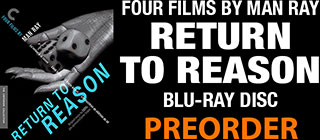

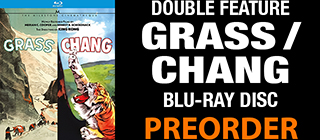
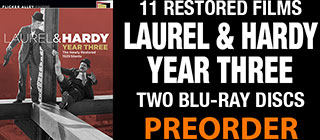
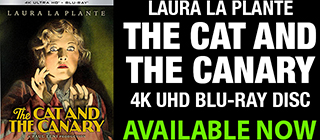
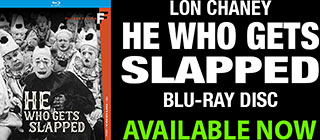
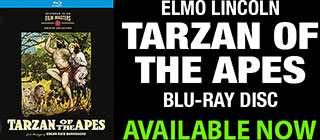



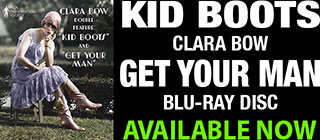
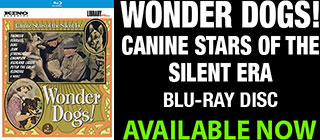
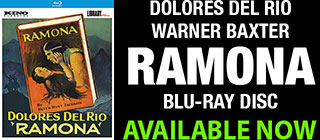
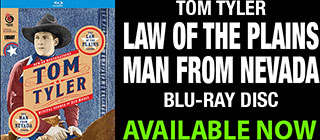

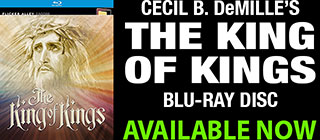
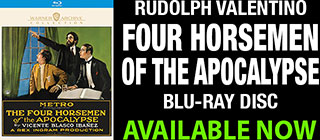
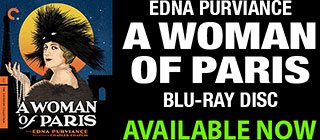
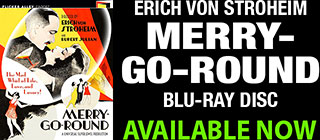

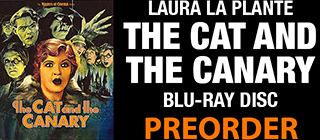
•
|




































